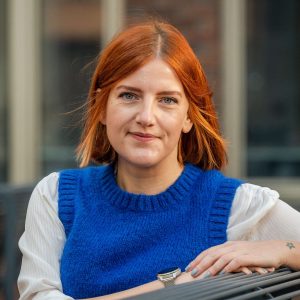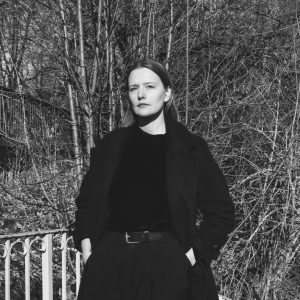Creativity from Vienna to the World is an online project that includes lectures, a blog and an online exhibition. It connects aspects of design and women’s history, pedagogy, migration history and cultural transfer to trace the achievements of migrant women designers who moved to the United States from Central Europe in the first half of the twentieth century. More specifically, the project addresses how ideas related to design and pedagogy consolidated in Central Europe were developed by women designers who had successful second careers in the United States, such as Emmy Zweybrück-Prochaska, Hilda Jesser-Schmid, Vally Wieselthier and Lisl Weil. It also interrogates dissemination through travelling exhibitions such as that of Franz Čizek’s female dominated art class, which toured the USA in 1923/24, publications like Zweybrück-Prohaska’s Stencil Book (1937), pedagogical activities such as Erika Giovanna Klien’s teachings at the Dalton School, as well as the founding of successful businesses like Liane Zimbler’s architecture firm in Los Angeles. By shedding light on the transatlantic connections that represented an important aspect in the careers of many women designers, the project aims to establish an accessible, critical record of the modernisation and development of women-led design and pedagogic practice in the nexus of Austrian-American exchange.
Creativity from Vienna to the World is a collaborative online project led by Professor Megan Brandow-Faller (City University of New York) and Dr Julia Secklehner (Masaryk University, Brno), sponsored by an event grant from the Botstiber Institute for Austrian-American Studies (BIAAS) and supported by the Austrian Cultural Forum (Washington D.C.).

Megan Brandow-Faller

Julia Secklehner

Veronika Halamová
Veronika Halamová, currently a PhD student at Masaryk University in Brno, obtained her Master’s degree at the same institution, specialising in the phenomenon of Aby Warburg’s pathos formulae and their continuity in modern times. In her interdisciplinary doctoral research, she explores the process of meaning-making of art within the viewer’s mind. Beyond her academic pursuits,Veronika is an active contributor to the Centre for Modern Art & Theory at the Department of Art
History within the Faculty of Arts at Masaryk University. In this capacity, she oversees the centre’s social media, promoting its activities. Additionally, Veronika has taken on the responsibility of managing social media promotion for the ‘Creativity from Vienna to the World’ project.

Valéria kršiaková
Valéria Kršiaková is an art historian who works as an external curator of the photography collection at the Slovak Design Museum. Her primary area of interest is the history and theory of painting, photography, and design in Slovakia during the first half of the 20th century. She pursued her art history education at Comenius University in Bratislava, where she completed her thesis on the Slovak modernist painter Edmund Gwerk (1895-1956). Later, she pursued her Master’s studies at Masaryk University in Brno, where she completed her diploma thesis on the subject of the School of Arts and Crafts in Brno during the Protectorate of Bohemia and Moravia (1939-1945). Currently, she is studying for a second Master’s degree focused on contemporary design practice at UMPRUM in Prague.

Julia Harasimowicz
Julia Harasimowicz specializes in art history and anthropology. At the University of Warsaw’s Institute of Art History, she is completing her Ph.D. dissertation, which analyzes the discourses surrounding children’s art in Europe and the United States from the late 1800s to the mid-1900s. Recently, she has been awarded the Fulbright Foundation Junior Researcher Award for her research at the Graduate Center City University of New York during the academic year 2023/2024. She works as a curator of contemporary art at the Ujazdowski Castle Center for Contemporary Art in Warsaw. She has also been collaborating on the shows of Friedl Dicker-Brandeis and Spring Never Comes Again. Childhood and Art in the 20th and 21st Century

Christopher Hertweck
Christopher Hertweck is a translator in the language pair English-German who is currently doing his MA in Translation Studies at the Institute of Applied Linguistics and Translatology (IALT) at Leipzig University, Germany. Before, he studied History and German Literature at the Humboldt University in Berlin, focusing on the cultural and social history of Germany in the late 19th and early 20th Century. He translated the Vienna to the World Website into German.